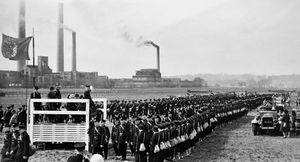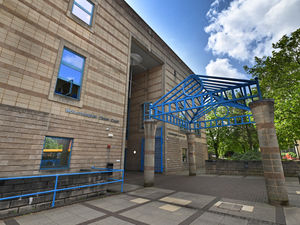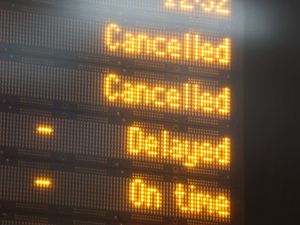The day Wolverhampton gave thanks to its firefighting heroes
It was a day a city saluted the heroes of the Blitz.

Here’s a photograph of Wolverhampton from the depths of our archives which sadly contains no information at all, and when we carried it on our website the other day we invited readers to identify it.
And now some of the pieces are falling into place as the location of this vast and impressive parade against a spectacular industrial backdrop can be pinpointed to Dunstall Park – Wolverhampton racecourse – with the railings and a couple of the jumps visible in the background.
That huge complex is the Courtaulds Textile Works which dominated the landscape. The chimneys of the Dunstall works were a well known part of the Wolverhampton skyline known as “the Three Sisters.”
So what was the occasion? The line-up of vehicles on the right is headed by a fire engine and most, if not all, of those taking part in the parade seem to be from the fire service.
On the assumption that the city would not have risked having so many fire service personnel in one place during the height of the war, we can conjecture that this was some sort of thank you parade towards the end of the conflict when the bombing danger had receded.
Those receiving the salute from the dignitaries on the platform will be members of the National Fire Service which was created in August 1941 and disbanded in 1948, when firefighting responsibility reverted to local fire brigades.
As for Courtaulds, unsurprisingly it was one of the biggest employers in the area. The firm came to Wolverhampton in the 1920s, apparently because it offered a supply of the right sort of female labour – meaning the young and single.
The factory at Dunstall opened in 1926. Later doubled in size, Courtaulds was virtually a self-contained town, with its own fire brigade, ambulance service, St John Ambulance, and even a Home Guard during the war.
It also had its own laboratories, nursing and medical staff.
During the Second World War the company was also called on to fill bombs with phosphorous.
In 1939 over 3,000 people were employed there, but during the war the number fell to below 1,000.
Courtaulds became one of the largest in the Midlands, and the announcement of its closure in May 1970, a month after a strike over pay, caused shock waves throughout Wolverhampton. Around 1,300 skilled textile workers were given notice of total shutdown by July 31.





